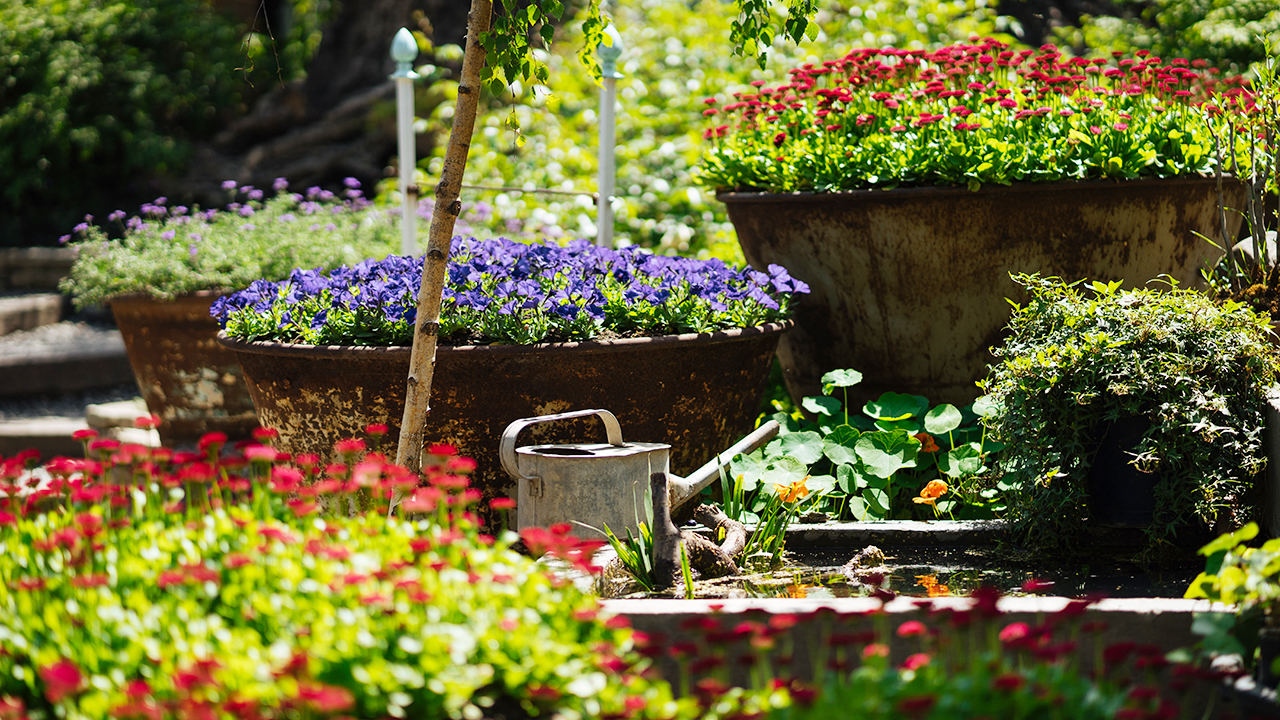
June is a vibrant and busy month for gardeners, as it marks the transition from late spring to early summer.
This is the time when gardens start to flourish, and there is plenty to do to ensure your plants thrive throughout the growing season.
This is an excellent time to plant a variety of flowers, vegetables, and herbs.
Warm-season crops like tomatoes, peppers, cucumbers, and beans can be planted outdoors if they haven’t been already.
It’s also a good time to sow seeds for quick-growing summer vegetables like zucchini and summer squash.
In flower gardens, consider planting annuals such as marigolds, zinnias, and cosmos, which will provide vibrant color throughout the summer.
If you have gaps in your flower beds, filling them with these cheerful blooms can make a significant difference.
As temperatures rise, it’s crucial to keep your plants well-hydrated.
Watering deeply and less frequently encourages deep root growth, which helps plants withstand dry periods.
Mulching is another essential task; applying a layer of mulch around your plants helps retain moisture, suppress weeds, and maintain a consistent soil temperature.
Organic mulches like straw, wood chips, or compost are excellent choices.
June is prime time for weeds to compete with your plants for nutrients and water.
Regular weeding is necessary to keep your garden looking tidy and to ensure your plants aren’t starved of resources.
Be vigilant about pests as well. Aphids, slugs, and caterpillars can be particularly problematic.
Handpicking pests, using barriers, or applying appropriate organic pesticides can help manage these unwelcome visitors.
To promote healthy growth and extend the blooming period of your flowers, regular deadheading is essential.
Removing spent blooms encourages plants to produce more flowers rather than focusing on seed production.
For shrubs and perennials, light pruning can help maintain their shape and remove any dead or diseased branches.
June is also a good time to feed your plants.
A balanced, slow-release fertilizer can provide essential nutrients that support vigorous growth and abundant blooms.
For vegetable gardens, side-dressing rows with compost or organic fertilizers can boost productivity.
Make sure to follow the recommended feeding schedule for each type of plant.
By staying on top of these tasks, you’ll ensure that your garden remains healthy and beautiful throughout the summer months.
Happy gardening!
Discover Beautiful Flowers, Expert Gardening Tips & Interesting Plant Science!
By submitting this form, you are consenting to receive marketing emails from: . You can revoke your consent to receive emails at any time by using the SafeUnsubscribe® link, found at the bottom of every email. Emails are serviced by Constant Contact

About The Author
John Bagnasco has been in the gardening industry for over 50 years, starting with a horticulture degree from Michigan State University and following a stint at Frank’s Nursery and Crafts in Detroit.
After publishing his first book “Plants for the Home Vol. I” in 1976, he moved to California to become regional manager and buyer for the Nurseryland division of Sunbelt Nursery Group.
He then became the head buyer for Armstrong Garden Centers based in Glendora, California. John had a part-time affiliation with Creative Promotions for ten years before joining them full-time in October 2000 as a senior editor and radio personality for Garden Compass.
John has also taught horticulture classes at Palomar College and San Diego State University.
He is the host of the DVD “The Essential Guide to Roses,” which also features Bryan Main and Bruce and Sharon Asakawa.
His most recent book is “Planting Designs for Cacti and Succulents”.
Currently, John is a co-host on “Garden America,” an interactive live gardening show that additionally provides podcasts of the broadcasts accessible on all major platforms.
You can contact John here.
